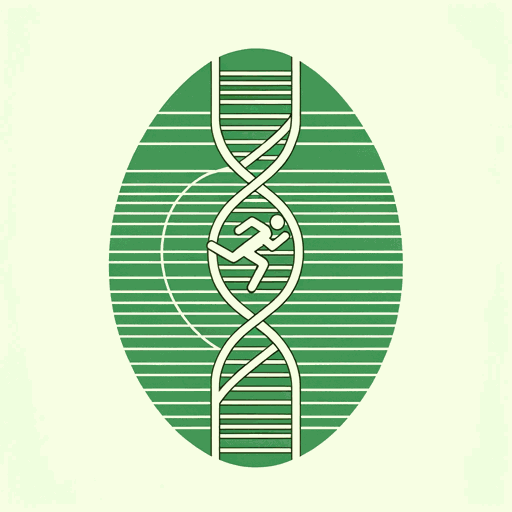50 pages • 1 hour read
David EpsteinThe Sports Gene: Inside the Science of Extraordinary Athletic Performance
Nonfiction | Book | Adult | Published in 2013A modern alternative to SparkNotes and CliffsNotes, SuperSummary offers high-quality Study Guides with detailed chapter summaries and analysis of major themes, characters, and more.
Summary and Study Guide
Overview
The Sports Gene: Inside the Science of Extraordinary Athletic Performance is a 2013 non-fiction book by David Epstein that investigates the role of genetics in athletics. The Sports Gene became a New York Times best seller and was nominated for the 2014 PEN/ESPN Award for Literary Sports Writing. Epstein, an investigative reporter and a passionate runner, combines data from scientific research, interviews with experts, and biographies and anecdotes of individual athletes to paint a complex picture of how biology and environment interact to produce the world’s top athletes. This guide references the first hardcover edition of The Sports Gene.
The Sports Gene begins by debunking a theory about baseball players having quicker reflexes; instead, Epstein interprets their ability to hit a fastball as a perceptual advantage, introducing the theory of “chunking,” the process by which experts group and process information. He next presents the concept of the 10,000-hour rule, which refers to the average amount of practice required for mastery, although the range of practice hours amongst experts, he notes, actually differs greatly. He profiles two professional high jumpers with wildly different paths to demonstrate that the condition of initial ability, and not just practice hours, is significant to athletic success.
Epstein does not seek to downplay the importance of hard work and practice in his book; rather, he hopes that understanding genetic factors will help us develop talent and improve performance, and he spends the remainder of the book examining the genetic basis of athletic performance through research, studies, interviews, and profiles of athletes. Among the topics he addresses, Epstein zeroes in on a genetic advantage in eyesight among Major League Baseball players and explores the biological differences and evolutionary causes that influence men and women’s athletic abilities.
Epstein argues that the globalization and commercialization of sports demanded specialization of athletes, resulting in a worldwide trend toward athletes with body types at the extreme edges of the bell curve populating professional sports. He addresses the extreme heights among professional basketball players and studies that show the surprising ways environment and genes interact to determine an individual’s height.
Helping athletes reach their potential, Epstein argues, means acknowledging racial and gender-based differences instead of denying them. Tracing human ancestry to Africa, Epstein explains ways in which ancient migration off the continent impacted genetic diversity. He also examines ACTN3, the speed gene, and its relevance to world-class sprinters. He compares two theories behind the dominance of Jamaican sprinters, one based on genetic advantages and the other on cultural advantages, and he explains how genetic evolution against malaria may contribute to the sprinting dominance of people from West Africa. Epstein also turns his attention to the Kalenjins in Kenya, an ethnic group known for their dominance of elite long-distance running, again identifying a mix of genetic and environmental factors that contribute to Kenya being a running superpower.
Driven in part by the death of a high school teammate at the finish line of a race, Epstein surveys a series of genetic mutations that appear to put people at a disadvantage, rather than an advantage, in athletic performance. These include the gene for hypertrophic cardiomyopathy , a disease that causes malfunction in the left ventricle of the heart, and a variant in a gene that influences brain recovery after trauma. He also explores the way different genes influence how people experience pain.
Epstein finally travels to northern Scandinavia to interview Finnish Olympic champion skier Eero Mäntyranta, who became a skier to change the circumstances of his life and who exemplifies the influences of both nature and nurture in athletic performance. Epstein’s key argument is that genetics and environment are intrinsically intertwined when it comes to athletic performance. He’s skeptical about the search for the perfect athlete and offers instead a positive message about biological diversity and the benefits of individualized training for any given person, the reader included.
Related Titles
By David Epstein


